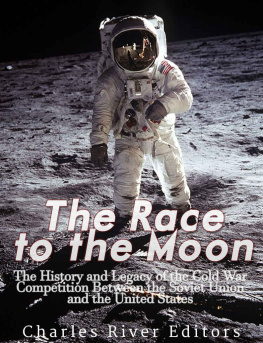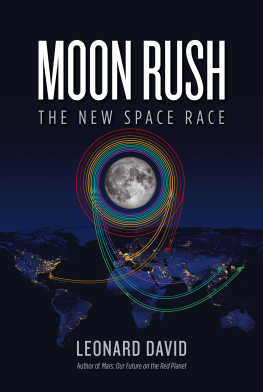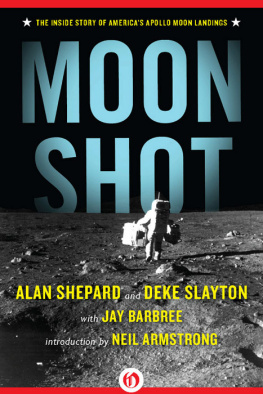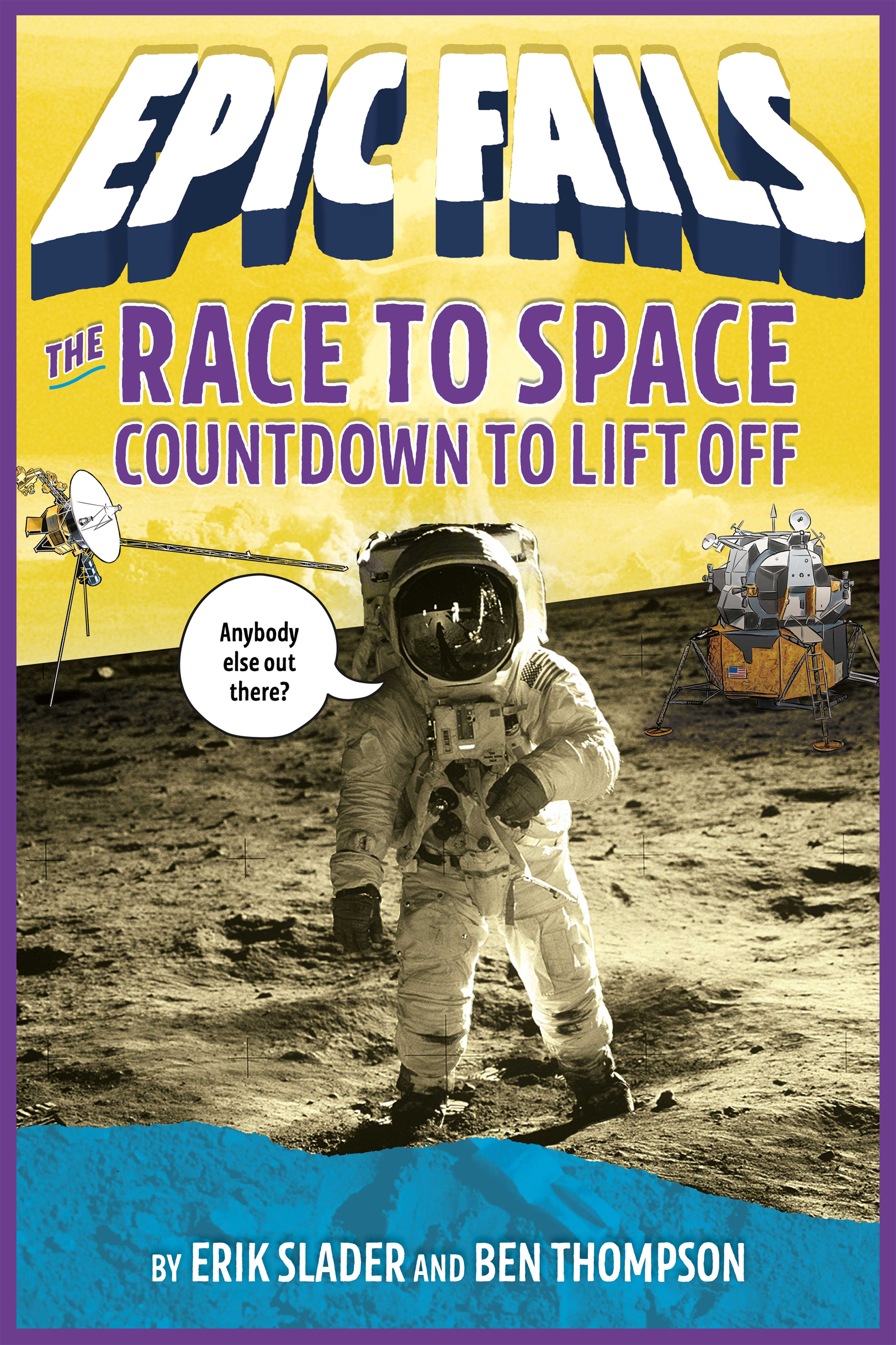Contents
Guide
Pagebreaks of the print version

The author and publisher have provided this e-book to you for your personal use only. You may not make this e-book publicly available in any way. Copyright infringement is against the law. If you believe the copy of this e-book you are reading infringes on the authors copyright, please notify the publisher at: us.macmillanusa.com/piracy.
To the future
Those who dare to fail miserably can achieve greatly.
John F. Kennedy
In 1970, Flight Director Gene Kranz told his team at NASAs Mission Control that failure is not an option. They needed to bring a group of stranded astronauts home from lunar orbit. If Mission Control didnt solve the problemand fastthe astronauts would die.
But failure is always an option, of course, and there probably isnt a worse place for something to go wrong than in the vacuum of outer space. A human can only survive a few seconds out there without a space suit, and in the 1960s and 70s, the only thing that separated brave American astronauts and Soviet cosmonauts from certain death was a thin sheet of metal and a bunch of technology that looked as if it came from a cheesy sci-fi movie.
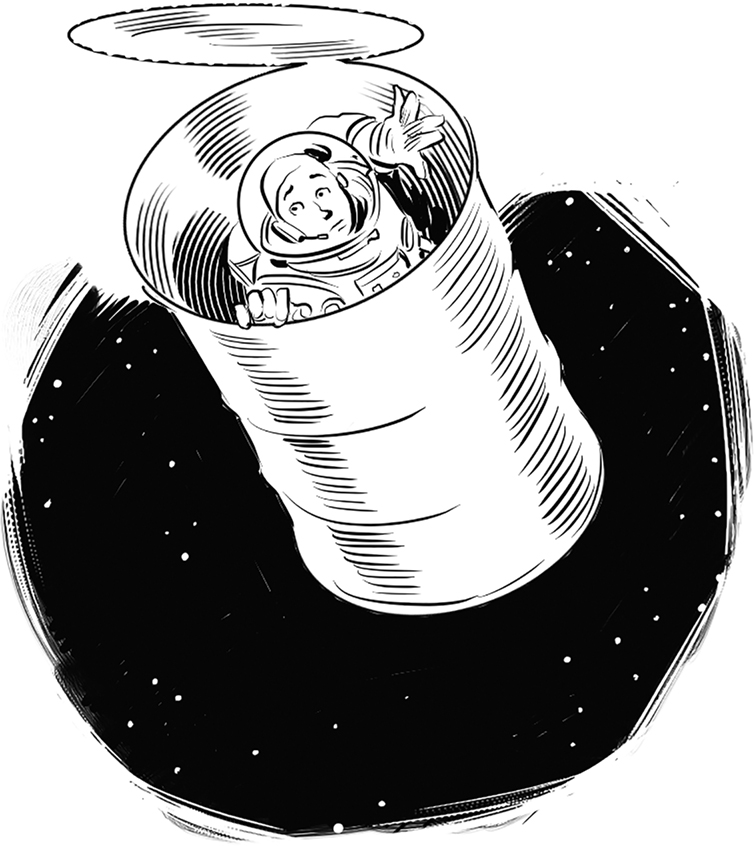

As of 2018, eighteen people have died in spaceflight accidents over the course of history. Thirteen more died during training or in practice missions. The dangers are real. The possibility for failure is always there. But heroic astronauts around the world face these dangers head-on, refusing to let the fear of failure stop them from trying to accomplish incredible things.
The intrepid men and women who go on these missions have all the bravery of the adventurers, explorers, and pioneers who first made important discoveries right here on planet Earth. For them, it was never about violence or conquest, but rather about finding new worlds, exploring the depths of space, and furthering scientific understanding. And, hopefully, using that knowledge to make life better for humanity and our planet as a whole.
Many of the first astronauts had no idea if their new technology could actually carry them into space. The first time anyone had crossed the Atlantic Ocean in an airplane was in 1919, and just forty years later people were orbiting the Earth in outer space. Thats not a very long time! These pilots (and most of the early astronauts were pilots) were using new tech like jet engines and rockets, fearlessly strapping themselves onto a few thousand gallons of jet fuel and blasting off through the stratosphere at thousands of miles per hour.
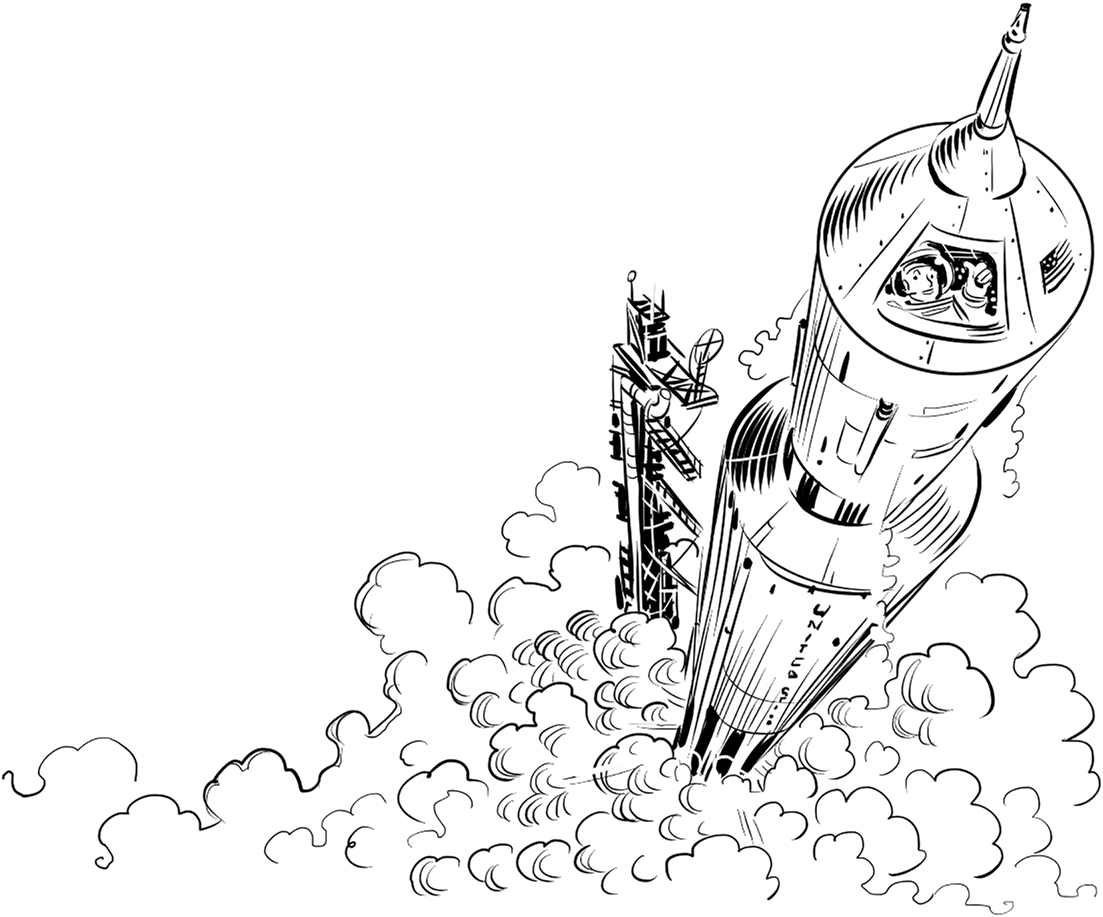
But getting the first men into outer space required more than just the astronautsit was a team effort that required a massive number of people. On the ground, mechanics, scientists, and engineers all worked together, doing incredibly complex mathematics ( by hand ), and building spaceships out of materials that you could only find in a junkyard today.
The story of the space program isnt about failure not being an option; its about humanity coming together, knowing full well that failure is always an option, and then persevering anyway.
1920
How many things have been denied one day, only to become realities the next! Jules Verne, From the Earth to the Moon
Have you ever looked up at the moon and wondered how far away it really is? To the naked eye, it sometimes looks as if you could just reach out and grab it, but the moon is actually 232,271 miles away from us! Whats even crazier is that between 1969 and 1972, twelve men actually made it to the surface of the moon and back! That said, it wasnt exactly a smooth journey from the Earth to the moon.
As it turns out, the hardest part of space travel is actually getting off Earth. So far, the most efficient way to escape Earths gravity is to use rocket propulsion, which is easier said than done.

The first rockets were invented when Chinese alchemists accidentally discovered gunpowder while trying to create an elixir of life. In 1232, the Chinese fought the Mongols at the Battle of Kai-Keng and used rockets on the battlefield for the first time in history. The Chinese Army built weapons that looked (and acted) like gigantic bottle rockets and launched them at the attacking Mongol Army. The rockets werent superaccurate and probably didnt do a ton of damage, but the explosions, smoke, and fire were so terrifying that the Mongols turned back and fled!
And according to legend, during the midsixteenth century, a Chinese official named Wan-Hu wanted to visit the moon. Wan took a wicker chair, strapped forty-seven rockets to it, and planned to use a set of kites to steer himself through the air. On his signal, servants quickly lit the fuses on the rockets, each filled with highly explosive gunpowder. A moment later, a boom louder than thunder sent everyone around diving for cover. When the smoke cleared, there was no sign of Wan-Hu or his trusty chair.
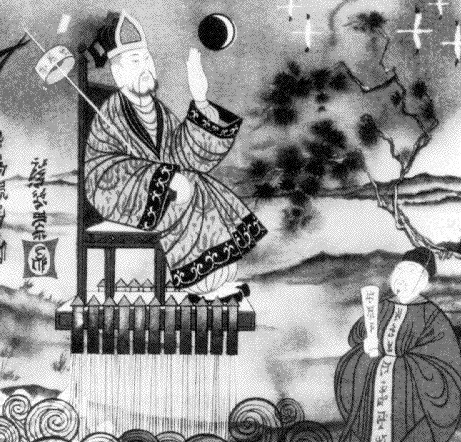
A depiction of Wan-Hu in his rocket chair, on display at the Marshall Space Flight Center in Alabama.
Needless to say, rocket science has come a long way since then.
Early rockets were based on a simple concept: an aerodynamic cylinder with two fuel tanks, each with a reactive substance that once combined and ignited would create a chemical reaction. The resulting explosion would be funneled downward to create enough lift to compensate for the rockets mass and propel it upward. Simple, right?
Nope. A metric ton of variables has to be accounted forincluding but not limited to temperature, size, weight, design, amount of fuel, durability, weather, etc. The slightest miscalculation could result in catastrophic failure (and in the early days, it often did). In fact, the entire process of perfecting rocket technology is a repeated exercise in failure: make a rocket; launch it; if it blows up, figure out what went wrong; repeat. The scientific method itself is built around seeking out flaws and improving on initial concepts until you have something that works.
In 1895, Russian scientist Konstantin Tsiolkovsky became the first to seriously consider the use of rockets as a potential means of traveling into orbit. He came up with the first equation in rocket propulsion. He theorized the use of mixing liquid hydrogen and liquid oxygen as fuel (way before it was ever possible to do so) and even calculated the speed needed for a rocket to break free of Earths gravity (which, for those wondering, is about 6.9 miles per second, or 25,020 miles per hour!). This is what is known as escape velocity .
In 1903 and 1911, Tsiolkovsky published two volumes of Exploration of Outer Space by Means of Rocket Devices in which he explained that a multistage rocket would be needed to achieve escape velocity. (A multistage rocket is basically a launch vehicle made up of multiple rockets stacked together that work in sequenceone after the other.) But few people seemed to notice these incredible revelations until decades later.





